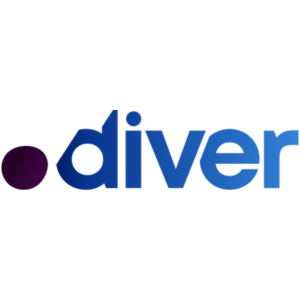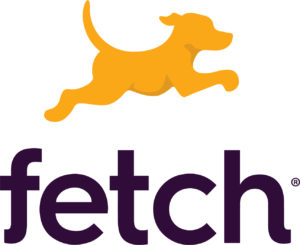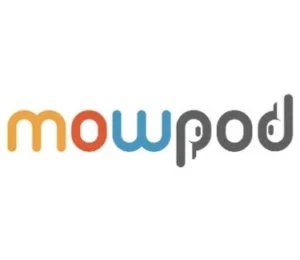Understanding Meeting Math — Aaron Bollinger // Kronologic
Aaron Bollinger
Kronologic

- Part 1Solving conflict between sales and marketing
- Part 2 Understanding Meeting Math — Aaron Bollinger // Kronologic
- Part 3Virtual SDRs & the importance of immediate response — Aaron Bollinger // Kronologic
- Part 4Using AI to solve the Last mile problem — Aaron Bollinger // Kronologic
- Part 5Success after the last mile — Aaron Bollinger // Kronologic
Show Notes
Quotes
-
“The conflict between sales and marketing is an ongoing conflict. As we all know, we can’t solve that conflict unless we can quantify the problem in a way that we all agree on. Out of that concern and need, Kronologic has created a framework called ‘Meeting Math’ that essentially gives you a sense and a size of the value that every meeting is worth.” -Aaron “Every time you get a lead that actually converts into a conversation, what is that actually worth on average and how valuable are those. Also, looking at the Delta of all the leads that we generate but never convert to meetings, how much are we losing? What’s the TAM of all that value that we worked hard to generate but never made to the next step.” -Aaron “That connects back to your framework that there’s a world of difference between a 10% conversion to meeting rate and a 50%. Even 10% or 20% could literally double the size of your business.” “Meeting Math framework from Kronologic focuses on just two metrics: Average Value per Meeting and The Last Mile Deficit. The math is very simple as well. The first metric, AVPM is about what is a given meeting worth every time an SDR or AE has a first qualified meeting with a prospect. Here’s how wefigure that out, first at a given product and a given marketsegment we look at your average statistical mean of your annualized contract value which in layman’s terms is, what is the deal on average worth?” -Aaron “For this product or market, let’s say 10 grand. Now let’s look at what is your qualified opt to close rate and most sales leaders know this. 25% of the deals that come into our pipeline, within a year will end up closing those deals.” -Aaron “One more number here, we’re taking a step backand say how many first meetings do we have to do with qualified prospects to get one qualified opportunity into the pipeline. So if we do 10 meetings with a qualified prospect, are 4 or 5 of those going to become opportunities in our pipeline?” -Aaron “Let’s say that you get a 40% qualification rate. So your SDRs are going to meet with 10 people, 4 of them are going to be actually qualified. You’re going to have a 25% conversion rate from qualified to close. So now, you are looking at a 1 out 10 sale rate and if the value of your deal is, on average 10,000 dollars, you’re looking at 10,000 dollars revenue out of every 10 qualification meeting.” -Ben “Here’s why it’s important. It gives you a couple of things. One is, just how valuable is every meeting. Every time I am on the phone I am essentially progressing or failing to progress a 1000 dollars in revenue for the company, it gives me as SDR or AE just how much valuable and how much preparation I need to do for a meeting that’s worth a 1000 dollars.” -Aaron “The way you account for that is just that first metric, you want to bucket these. You have enterprise deals and small business deals, you should definitely calculate and average value per meeting for enterprise deals and calculate a separate for SMBs.” -Aaron “The Last Mile Deficit is a way to measure the TAM of the leads that you create as a marketer but that don’t convert to meetings, with or without influence by you so that if you deliver a 100 leads for a channel and sales only get 12 meetings out of that, we want to understand the value of the leads that did not convert.” -Aaron“It connects back to the average value per meeting because the way that you calculate the Last Mile Deficit is that you take Total Qualified Leads for a given channel, you subtract the meetings that were actually booked from those leads and then you take that delta and you multiply it by your Average Value per Meeting.” -Aaron “Let’s say we’re going to do a webinar lead for the MarTech podcast. You’ve got a 100 of thoseleads that registered but only 10 of them actually booked meetings with you when you followed up with them. So, a 100 leads minus 10 leads that booked. Your delta is 90, so we take the 90 leads that didn’t convert and we multiply it by our Average Value per Meeting which was 1000 dollars. In this case, your Last Mile Deficit is 90,000 dollars.” -Aaron “This is the point. It highlights how much value is marketers generating but the company as a whole fails to capture.” -Aaron
- Part 1Solving conflict between sales and marketing
- Part 2 Understanding Meeting Math — Aaron Bollinger // Kronologic
- Part 3Virtual SDRs & the importance of immediate response — Aaron Bollinger // Kronologic
- Part 4Using AI to solve the Last mile problem — Aaron Bollinger // Kronologic
- Part 5Success after the last mile — Aaron Bollinger // Kronologic
Aaron Bollinger
Kronologic

Up Next:
-
Part 1Solving conflict between sales and marketing
This week we're going to talk about the strategies, tools, and best practices that will help you convert more MQL's into revenue. Joining us is Aaron Bollinger, the Co-Founder and CRO at Kronologic, which uses an AI driven virtual SDR technology to quantify the value of highly repeatable meetings and automate the process of directly placing leads onto your sales team's calendars so you can recognize more pipeline. In part 1 of our conversation, we are going to discuss the conflict between sales and marketing.
Play Podcast -
Part 2Understanding Meeting Math — Aaron Bollinger // Kronologic
This week we're going to talk about the strategies, tools, and best practices that will help you convert more MQL's into revenue. Joining us is Aaron Bollinger, the Co-Founder and CRO at Kronologic, which uses an AI driven virtual SDR technology to quantify the value of highly repeatable meetings and automate the process of directly placing leads onto your sales team's calendars so you can recognize more pipeline. In part 2 of our conversation, we're going to talk about how you can understand what Aaron calls meeting math.
-
Part 3Virtual SDRs & the importance of immediate response — Aaron Bollinger // Kronologic
This week we're going to talk about the strategies, tools, and best practices that will help you convert more MQL's into revenue. Joining us is Aaron Bollinger, the Co-Founder and CRO at Kronologic, which uses an AI driven virtual SDR technology to quantify the value of highly repeatable meetings and automate the process of directly placing leads onto your sales team's calendars so you can recognize more pipeline. In part 3 of our conversation, we're going to talk about virtual SDRs and the importance of immediate response.
Play Podcast -
Part 4Using AI to solve the Last mile problem — Aaron Bollinger // Kronologic
This week we're going to talk about the strategies, tools, and best practices that will help you convert more MQL's into revenue. Joining us is Aaron Bollinger, the Co-Founder and CRO at Kronologic, which uses an AI driven virtual SDR technology to quantify the value of highly repeatable meetings and automate the process of directly placing leads onto your sales team's calendars so you can recognize more pipeline. In part 4 of our conversation, we're going to continue the conversation by talking about how to use AI to solve your last mile problem.
Play Podcast -
Part 5Success after the last mile — Aaron Bollinger // Kronologic
This week we're going to talk about the strategies, tools, and best practices that will help you convert more MQL's into revenue. Joining us is Aaron Bollinger, the Co-Founder and CRO at Kronologic, which uses an AI driven virtual SDR technology to quantify the value of highly repeatable meetings and automate the process of directly placing leads onto your sales team's calendars so you can recognize more pipeline. In part 5 of our conversation, we're going to talk about continuing success after the last mile.
Play Podcast










